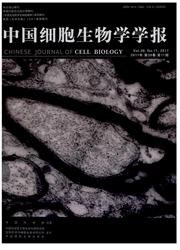

 中文摘要:
中文摘要:
在果蝇、斑马鱼、鸡等三胚层动物胚胎早期发育的原肠胚期,原条两侧的上胚层细胞进入原条经历上皮一间充质转化(EMT),迁移进入囊胚腔,形成松散的中胚层细胞,位于原条不同部位的细胞其迁移路线和分化命运不同,如前部原条细胞贡献于体节和心脏等,而后部原条细胞则迁移至胚外形成血岛。为了研究细胞的迁移途径及分化命运是否会随着细胞所处不同部位微环境的改变而改变,利用传统的移植技术,将宿主鸡胚原条前部的一部分细胞用GFP阳性的相同时期鸡胚原条组织替换,培养一段时间后,用荧光体视显微镜追踪GFP阳性细胞的迁移途径。结果发现,从供体原条后部移植到宿主原条前部的细胞遵循原条前部细胞迁移的路线,反之亦然:原位杂交结果显示移植后的GFP阳性细胞分化为所处部位的细胞类型。上述结果表明:鸡胚原肠胚期原条细胞迁移和分化的命运决定于细胞所处的微环境或者说局部基因表达的时空性。
 英文摘要:
英文摘要:
In chick gastrulation, the epiblast cells near primitive streak go through the epithelial-mesenchymal transition (EMT) and migrate into the blastocyst cavity, form the loose mesoderm at last. The cells in different part of primitive streak undergo different trajectory of cell migration. In order to understand whether the pattern of cell migration will be transformed along with the microenvironment alteration, we simply replaced the anterior or posterior primitive streak cells in host embryo using traditional transplantation technology, in which primitive streak tissue was labeled by GFP through electroporation previously in the same stage donor embryo and then we track the migration path of the GFP-positive ceils with fluorescence stereomicroscope after incubation for the required time. We found that the transplanted posterior primitive streak cells to anterior part of streak followed the anterior primitive streak cell migration pattern rather than kept its posterior streak cell migration path, and so did vice versa. It suggests that the migration pattem of streak cells in gastrulation depends on the local microenvironment or spatiotemporal gene expression.
 同期刊论文项目
同期刊论文项目
 同项目期刊论文
同项目期刊论文
 Dimethyl phenyl piperazine iodide (DMPP) induces glioma regression by inhibiting angiogenesisDimethy
Dimethyl phenyl piperazine iodide (DMPP) induces glioma regression by inhibiting angiogenesisDimethy Caffeine interferes embryonic development through over-stimulating serotonergic system in chicken em
Caffeine interferes embryonic development through over-stimulating serotonergic system in chicken em Retention of Stem Cell Plasticity in Avian Primitive Streak Cells and the Effects of Local Microenvi
Retention of Stem Cell Plasticity in Avian Primitive Streak Cells and the Effects of Local Microenvi 期刊信息
期刊信息
